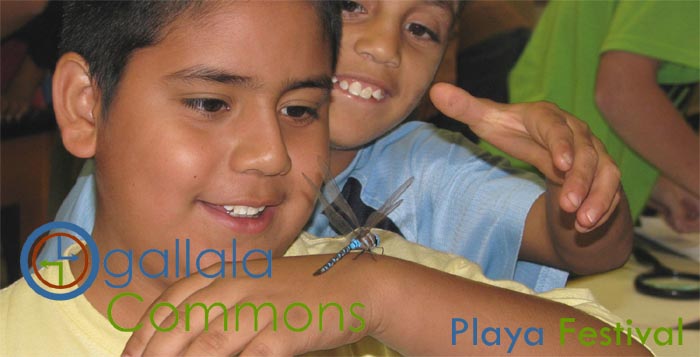 |
| Students examine a Macro-invertebrate jar full of spike rush and tiny creatures. The playa jars are providing us with a glimpse of what a wet playa would look like as we are working in a dry playa in a drought year. |
 |
| A student attempts to see how deep a crack in the OC Playa is. |
We had the pleasure of meeting approximately 70 fifth grade students from Whiteface, Hart, and Nazareth, Texas. The students appeared excited to be allowed the opportunity for an outdoor experience. I am not sure they knew the treat they were in for. Once we completed the "classroom" instruction that included a great journal writing lesson and bird identification, the students proceeded to (what I hope) will be the one field-trip they will never forget. The day included: 1. The "Raptor presentation" What a sight to see! Live owls! I wonder how many parents are superstitious! 2. Field Experience included plant Identification and my first experience with buffalo chips and scat (I had no gloves.) Also, making observations and predictions about the playa landscape was fun. 3. Buffers/waterfowl presentations were great!
Overall, this group was pleasantly surprised and learned a great deal about the world around them. The playa trunk will definitely enhance the learning of this group.
Sara Hunter's fifth grade class from Nazareth, Tx. enjoyed a morning outdoors at the Playa classroom learning about the High Plains water cycle, raptors, waterfowl, shorebirds, plus soil properties, playa plants and journal writing. Nazareth was joined by 52 students from Hart, Tx. and Whiteface, Tx.







